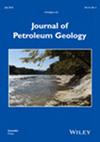Comparison between Core- and Well Log-Based Identification of Flow Units in the Mid-Cretaceous Bangestan Group Reservoir, Mansuri Field, SW Iran: Implications for Regional Characterization
Abstract
Core- and well log-based techniques of reservoir characterization were used to independently assess mid-Cretaceous (Albian–Santonian) flow units in the Bangestan Group reservoir of the Mansuri oilfield, located in the Dezful Embayment of SW Iran. The outcomes of the two techniques were compared to assess their utility in flow unit determination. Core-based reservoir classification using the “Flow Zone Indicator” and “Stratigraphic Modified Lorenz Plot” approaches defined 15 flow units in the Mansuri reservoir, including three speed zones. Well log-based (“K-means” and “linkage clustering”) methodologies provided broadly consistent results with 16 flow units defined in the same reservoir sequence. The log-based reservoir zonation gave a better vertical and laterally continuous representation of the reservoir geometry, while the core-based zonation provided more information about reservoir quality and ranking of the flow units identified. To assess its regional significance, a reservoir zonation combining both techniques was then compared with Bangestan Group reservoirs across SW Iran. The analysis highlighted the influence of regional unconformities and associated subaerial exposure upon reservoir quality and flow unit geometries within the Bangestan reservoir. These exposure surfaces had distinct well log signatures, which could be traced across the region and used to define the regional configuration of the Bangestan Group reservoir in the absence of core data.

 求助内容:
求助内容: 应助结果提醒方式:
应助结果提醒方式:


